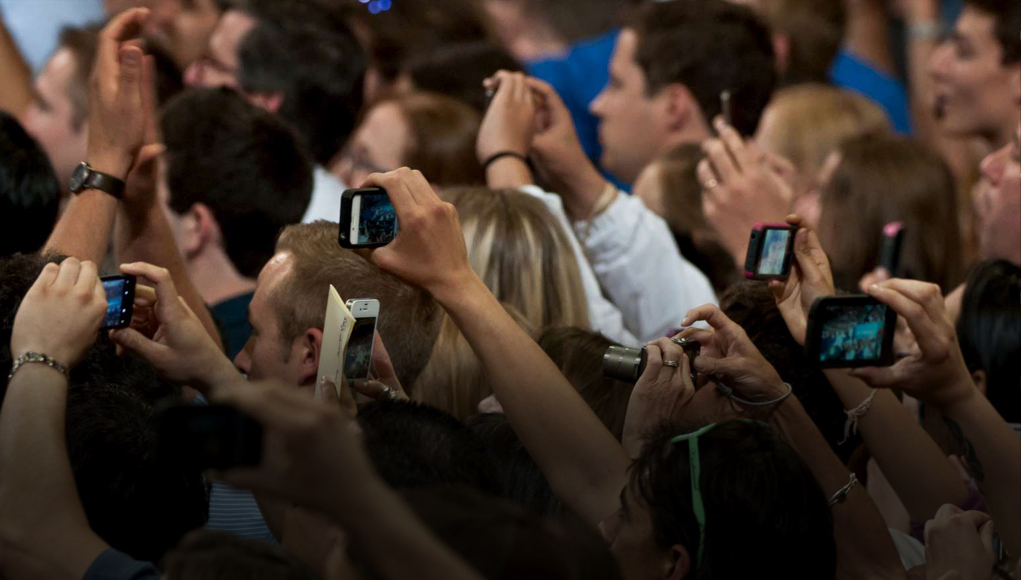Shortly after 4pm on the 27th of March, the X account @churPanic commenced a live broadcast on a mobile phone from the streets of Gisborne, New Zealand.
Against a backdrop of community outrage at taxpayer-funded Rainbow Storytime in the local library, a pedestrian crossing had been whitewashed. Residents of this small North Island town were protesting at the repainting of it in the colours of the Rainbow flag. There was a heavy police presence manhandling the demonstrators and making arrests.
Minutes earlier the livestream on Facebook from one of the protest groups had gone dark when police arrested the cameraman. It didn’t take long for the internet to discover the small @churPanic account on another platform: a link to his broadcast was rapidly shared and reshared, and hundreds of people tuned in. Two hours later tens of thousands had watched the footage. Shortly after midnight photojournalist Chris De Bruyne in Sydney published a subtitled remix of a clip someone else had cut from the original as a service to the deaf community. 75,000 people viewed De Bruyne’s version. It was one of many.
Within a day hundreds of thousands – if not millions – had watched the footage in one form or another, most with no idea of its origin. This is raw news, proliferating through the democratising process of the internet.
And it’s killing mainstream media.
4pm is too late in the day for the story to make the 6 o’clock news on TV channels. The first mainstream coverage was at 9 pm in online newspapers and late evening broadcasts. By the time the creaking legacy media fabricated a narrative fitting their editorial slant for consumption by a domestic New Zealand audience, the entire world had already seen @churPanic’s footage in one form or another and formulated their own interpretations.
Legacy media perceive the social media giants as the greatest threat to their business models.
Blatant biases aside, the reason for the demise of the legacy media is their slavish devotion to antiquated businesses models that stymie innovation. In failing to evolve, audiences have abandoned them for more reliable sources elsewhere, and advertisers have shifted with them.
The legacy media isn’t going down without a fight though, and its death throes are interesting to observe. Far from reviewing their own approach, the legacy media have declared war on everyone else: social media corporations, independents, imagined disinformation programmes by shadowy international organisations, even their own audiences.
The reality the legacy media refuses to accept is that We, The People, Are The Media Now. Where once it was said to be unwise to “quarrel with a man who buys his ink by the barrel”, the reality is that every person today has a video camera in their pocket with social media providing the capability to reach millions with the click of a button. In seeking out alternative information sources, the people changed the channel.
Back to Chris De Bruyne. It’s mid-afternoon on the 24th of March and British author Douglas Murray is speaking in Sydney. Murray’s presence attracts a pro-Palestine demonstration, one of whom assaults a pro-Israel counter-demonstrator in full view of NSW police, who don’t intervene. The incident is caught in De Bruyne’s livestream which, as an experienced independent, he broadcasts with an embedded watermark. Realising the newsworthiness, he offers to sell the footage to the major Australian news agencies, all of whom decline.
Citizen journalists and independents are, after all, objects of derision amongst the great and good of legacy news desks. They are qualified to arbitrate content to the public while De Bruyne, in their opinion, is not. But they rip off his footage anyway.
At 9pm Rita Panahi introduces the story on Sky News with the watermarked livefeed, scraped from De Bruyne’s social media account. She’s doing him a favour; other channels broadcast his material with the watermark blurred out.
Against a backdrop of community outrage at taxpayer-funded Rainbow Storytime in the local library, a pedestrian crossing had been whitewashed.
Paying compensation for copyright infringement is relatively inexpensive on the rare occasions an independent has the financial means to sustain litigation. As a bonus, legacy media can avoid the operational costs of employing cameramen in the field while there is content to be misappropriated and independents who can be exploited.
It happens to De Bruyne so regularly he keeps a spreadsheet.
Legacy media perceive the social media giants as the greatest threat to their business models. Utilising their incestuous relationships with predominantly left-wing political parties, they’re forcing those platforms to pay compensation for disseminating local news content. In Australia it’s called the News Media Bargaining Code and in New Zealand, the Fair Digital News Media Bargaining Bill.
The irony of demanding fees to redistribute their content whilst they themselves habitually infringe the copyright of independent producers is lost on the legacy media. But the deliciousness of the irony is that it isn’t the social media platforms that are their enemy. Rather, it’s the people who utilise them. While legacy media are distracted by a war they cannot win with social media corporations, Chris in Sydney and some bloke who goes by the handle “@churPanic” in Gisborne are the people on the ground, reshaping the media landscape by delivering unvarnished news and enabling audiences to reach their own conclusions.
And they are one component of a much broader trend. Traditionally trained journalists such as Chris Lynch Media in Christchurch are increasingly going independent. Blogs such as The BFD in Auckland are evolving into fully-fledged media operations. Writers publish to their subscribers on sites such as Substack in the first instance and take offers from legacy media to republish.
Desperate to navigate the new realities of a dying industry, NZME appointed a blogger to head their NewstalkZB+ division. Alternative media operators have emerged with innovative business models as varied as The Platform, financed by old money, and RCR, with support from their audience. The Underground Daily provide platforms to deliver services enabling new talent.
Collectively these individuals and organisations comprise the new media landscape. Legacy media no longer controls the medium. It is the independents that create the message because content is king and they produce it. Time will tell, and the market will decide, if these new players can develop revenue streams beyond advertising to sustain themselves.
But one thing is certain: the media landscape belongs to them and its future is theirs to determine.
Thank you for your support. To help us in our battle to protect liberty and freedom please click here

Simon Anderson is a technology consultant from Auckland, New Zealand. He believes in the fundamental right of all people to exercise their democratic rights peacefully, particularly with regard to free speech. Simon came into public consciousness as a video-documentarian during the trans rights counter protests in Auckland during March 2023.









